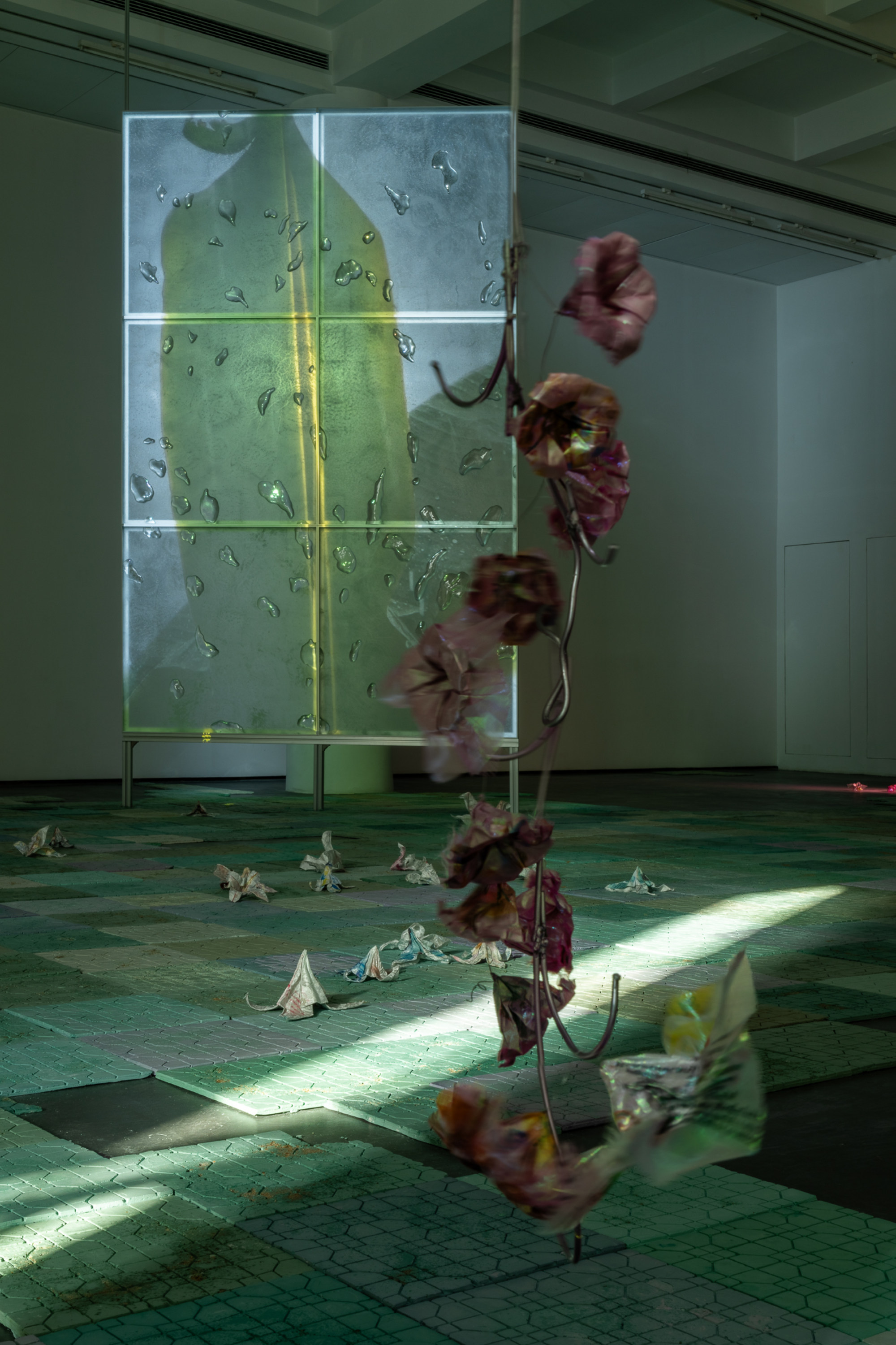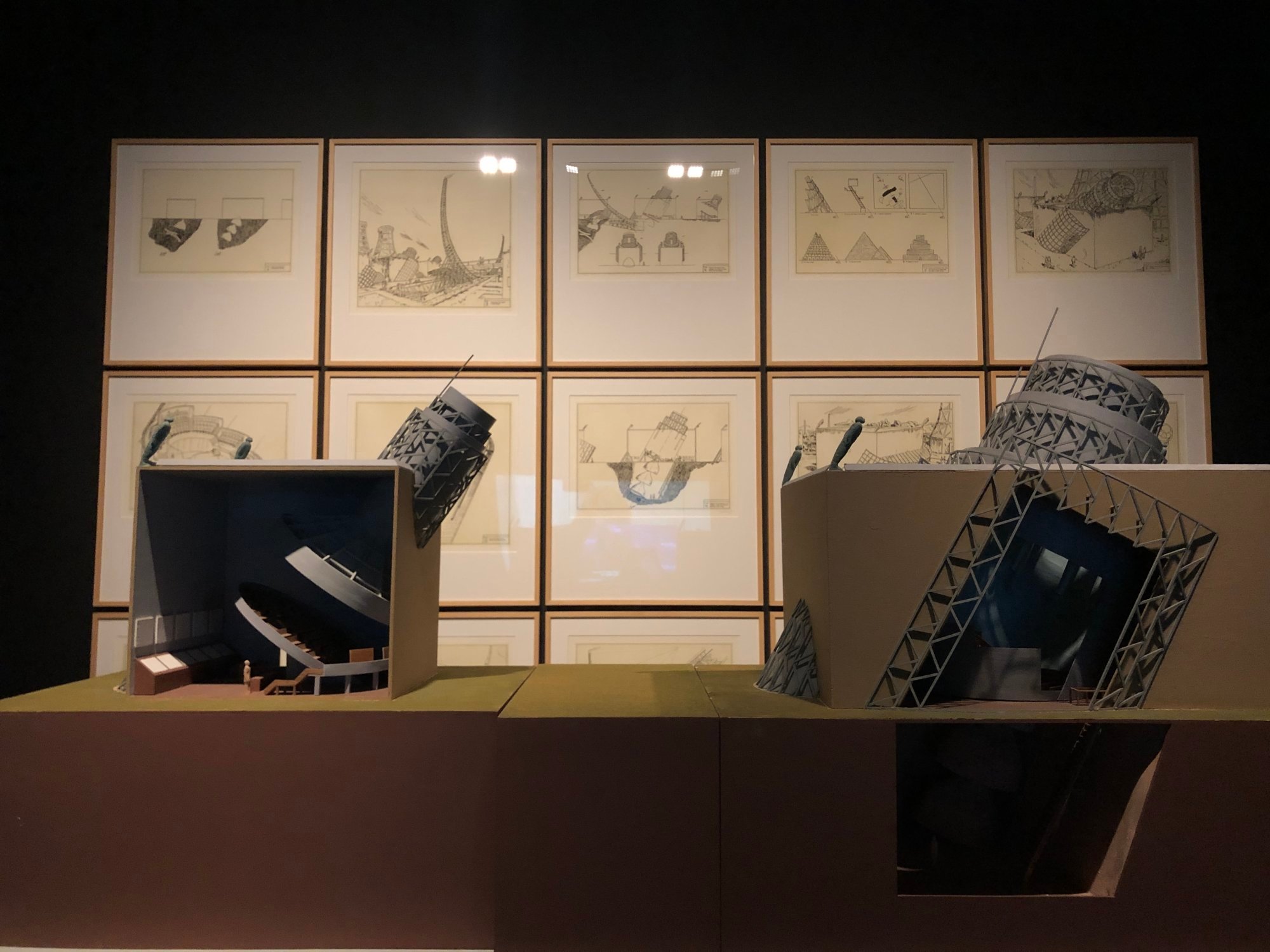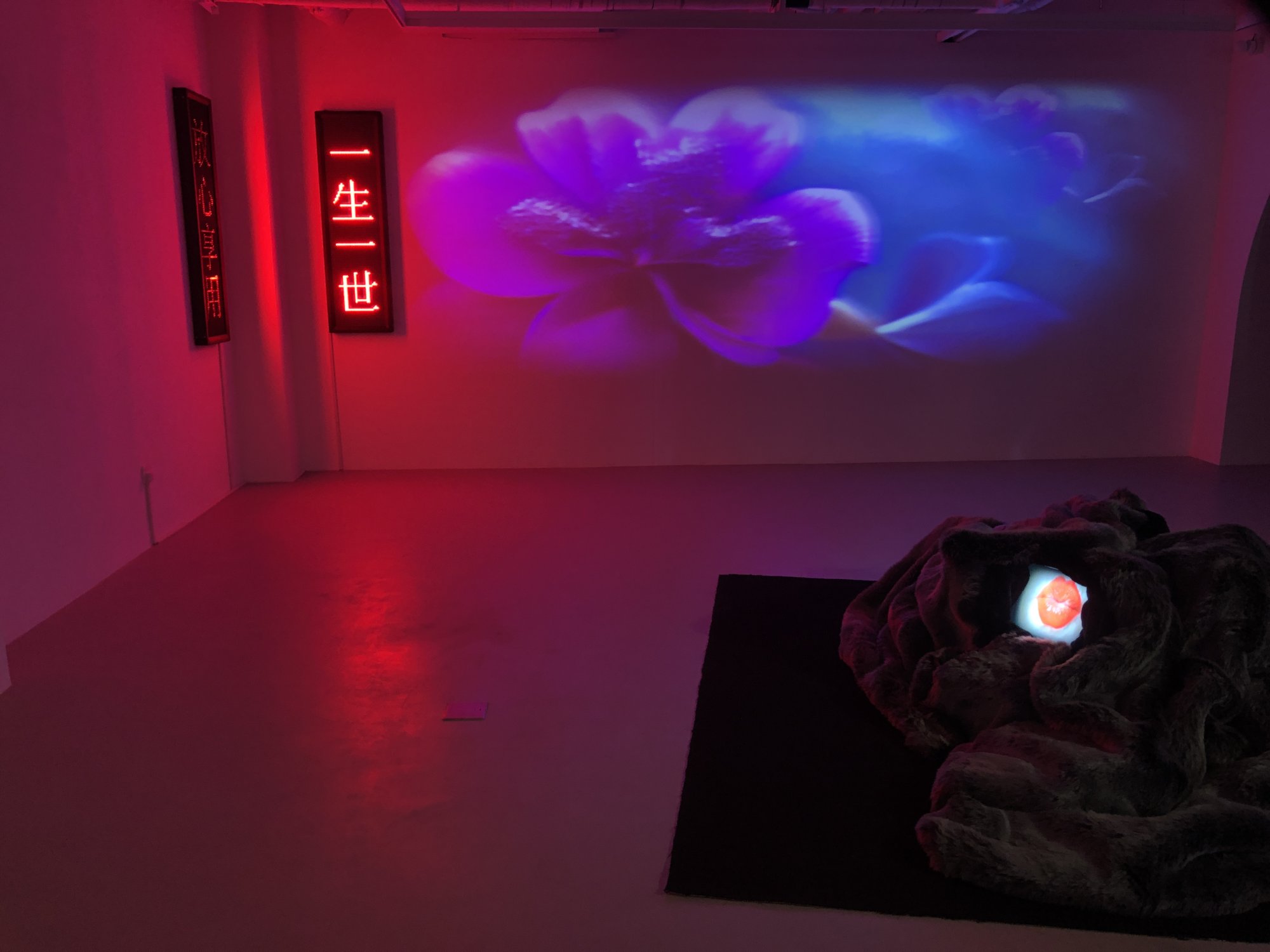
What’s Shanghai’s art scene like in late 2023? Absolutely buzzing – from Art021 to the Shanghai Biennale, things are looking busier than ever
- Both opening on November 9, Shanghai’s two flagship art fairs – Art021 and West Bund Art and Design fair – saw their biggest editions ever
- Recommended exhibitions continuing in Shanghai include Tan Jing and Shubigi Rao at Rockbund Art Museum, and Liu Heung-shing at the Pudong Art Museum
When two art fairs in Shanghai were dramatically shut down a year ago and gallerists and artists stood by helplessly as artworks were sprayed with disinfectant, there were genuine fears that zealous anti-Covid measures and lengthy lockdowns would do long-term damage to the city’s art scene.
One year on, Shanghai Art Week is buzzing again. It is clear that the Chinese financial capital’s ambition to become an ever-bigger art market is undimmed even amid an economic downturn and signs of collectors spending more cautiously.
Both the city’s flagship art fairs, which opened on November 9, saw their biggest editions ever.
The 10th West Bund Art and Design fair, which is run by the local district government, had a record 185 exhibitors spread across four venues, including a new Orbit exhibition centre by Heatherwick Studio that looks like it is wrapped by ribbons on the outside.

Across town, the 11th edition of collectors-owned Art021 packed 150 exhibitors into the Shanghai Exhibition Centre.
Art021 was stuffed to the gills on opening day despite a torrential downpour – which could have something to do with the fact that ticket scanners stopped working in the late afternoon and everyone could get in for free.
In total, the fair counted 80,000 visitors, close to the number that went to Art Basel Hong Kong in March. West Bund does not provide visitor numbers.
This year, international auction houses and galleries also had their biggest ever presence at the annual China International Import Expo, the world’s largest trade fair – which was attended by Chinese Premier Li Qiang and Australian Prime Minister Anthony Albanese – as the city looks to encourage more cross-border sales of art and artefacts through its massive free-trade zone.
In the thick of it: artist’s layered oil paintings convey nature’s many forms
Galleries were realistic about the state of the Chinese economy and the impact of the downturn on art-buying appetite.
Works at the two fairs were nearly all paintings, which are generally easier to sell than sculptures and video works, and covered a broad price range, from around US$3,000 to a few that cost upwards of US$300,000.
Gallerists generally found the market in the city of 25 million to be exhibiting more resilience than fairs in other Asian cities held since May, when post-pandemic recovery in China ran out of steam and led to a general downturn across the region.
“We have no problem in selling smaller works and those are gone very fast. It’s just that collectors need more time to consider big works,” said Vivian Har, the Hong Kong-based executive director of Tang Contemporary Art, whose booth at Art021 had works by 20 artists, including Korea’s Woo Kukwon.

Anything above US$300,000 would struggle in this climate, said Timothy Taylor, a London-based gallerist who was taking part in his eighth fair in West Bund.
But like Har, he said his booth did well, selling works by artists such as Alex Katz, Eddie Martinez and Daniel Crews-Chubb, as well as Alicia Adamerovich, who has never shown in Asia before.
Collectors who attended the fairs were mostly from Shanghai or other mainland Chinese cities, but many curators and artists also flew in from all over the world, especially for the opening of the 14th Shanghai Biennale and a mind-boggling 200-plus exhibitions that the government says are taking place in commercial and non-profit venues around town.

These include a major Henri Matisse exhibition at UCCA Edge, the Shanghai outpost of the Beijing non-profit institution, in the new gallery area along the recently gentrified Suzhou Creek waterfront.
The largest-ever retrospective of French artist Raoul Dufy is being held at the West Bund Museum, presented by venue partner Centre Pompidou. The French museum, where workers held a one-day strike in October ahead of a five-year renovation project that will keep the centre closed from 2025-2030, will renew its five-year partnership with the West Bund Museum when the current contract expires in 2024, says Zhou Tiehai, director of West Bund Art and Design.
Meanwhile, many out-of-town visitors took the opportunity to check out Deji Art Museum, G Museum and The Cloud Collection – Contemporary Art Center (owned by three collectors) in Nanjing, as well as the centennial retrospective exhibition of Zao Wou-Ki at the China Academy of Art in nearby Hangzhou.
Kyoto art fair looks to stand out by embracing city’s Zen Buddhist temples
Here are a few recommended exhibitions that are continuing in Shanghai:
1. ‘Cosmos Cinema’, the 14th Shanghai Biennale
This exhibition features works by 80 artists selected by the curatorial team led by Russian-born Anton Vidokle who, among other roles, is a filmmaker who has spent years investigating the cultural influence of a 19th-century school of thought called Cosmism.
This philosophy suggests that our world includes the dead and gone, and that there is a way through space exploration and technological advancement to achieve immortality and find unlimited resources.
Thankfully, the biennale is not a glorification of the billionaire space race. The two pieces that bookend the vast display of over 200 works beautifully capture humankind’s doomed belief that the answer is somewhere “out there”: Trevor Paglen’s Prototype for a Nonfunctional Satellite (Design 4; Build 4) and models by Ilya and Emilia Kabakov, depicting their utopian “The Center of Cosmic Energy” (2007), which recall the most famous of modern unbuilt monuments, Vladimir Tatlin’s Monument to the Third International.

The entire show’s stress on relativism and alternative points of view is heavy-handed at times, but the well-curated selection and sensitive display (designed by Hong Kong’s Collective studio) makes this a must-see.
“14th Shanghai Biennale: Cosmos Cinema”, Power Station of Art, 200 Hua Yuan Gang Lu, Huangpu District. Until March 31, 2024.
2. Tan Jing and Shubigi Rao at Rockbund Art Museum
Two powerful solo exhibitions by two women artists take place at one of the very best private art institutions in China.
Shenzhen-born Tan Jing stirs up family history and out come wafts of tom yum soup, released as special floor tiles are broken up as visitors tread on them. Her paternal grandparents were both Cantonese-Thai, born in Bangkok, who moved to China in the 1960s.
Videos combine Tan’s visits to her Thai relatives with fictional exchanges with her late grandfather. “Inlet of Arid Dreams” is a wonderful show about not belonging and I like how the tiles connect to her and husband Zheng He’s chosen new home in Jingdezhen, the capital of pottery.
Meanwhile, Singaporean artist Shubigi Rao continues her long-running “Pulp” series with “These Petrified Paths”. A new feature film of the same title was shot in September 2022 in Armenia during the Armenia-Azerbaijan border clashes, and looks back at a history of “cultural genocide” and the women who were dedicated to preserving libraries and Armenian literature.

The film is screened in the gallery directly beneath a 12-metre-high pylon that extends all the way up the three-storey central atrium, representing a “tree of knowledge” and existing power structure that can be disturbed from the bottom up.
A visit to the Rockbund Art Museum should include a stroll around the newly completed Rockbund Neighbourhood of shops and restaurants that tastefully combines new builds with 11 restored heritage buildings.
“Tan Jing: Inlet of Arid Dreams” and “Shubigi Rao: These Petrified Paths”, Rockbund Art Museum, 20 Huqiu Road, Huangpu District. Until February 25, 2024.
3. Liu Heung-shing at the Pudong Art Museum
“Liu Heung Shing: Lens, Era, People” is the largest solo exhibition of the Hong Kong-born, Pulitzer-winning photojournalist to date, featuring around 200 images taken since 1978, when he began working for Time magazine and the Associated Press in Beijing.
He captured important moments of history, such as Mikhail Gorbachev’s resignation as Soviet President in 1991; ordinary moments made extraordinary because of time and place, such as a 1981 photo of Chinese students sitting in a brightly lit Tiananmen Square at night, studying for the recently reinstated university entrance exams; and intimate, lighthearted portraits of countless celebrities and artists.
“Liu Heung Shing: Lens, Era, People”, Pudong Art Museum, 2777 Binjiang Avenue, Pudong New Area. Until December 17.
4. Ellen Pau’s first mainland China exhibition
Ellen Pau’s first-ever solo exhibition in mainland China, “Inauspicious Symbol”, is being held in a small, obscure and semi-private venue which may seem out of keeping for the influential video art pioneer. But read the new essay by the Asia Art Archive’s Anthony Yung, about the strategy of secrecy and private codes long adopted by Hong Kong artists, and the underwhelming location makes sense.
Here are rarely seen early works by Pau, including the newly restored Glove (1984), shot in 8mm, and Operation Theatre (1995), which adopts the point of view of a surveillance camera inside the hospital where Pau worked for many years as a radiographer.

It is also encouraging to see works addressing Hong Kong issues on view in Shanghai. Here, the placement of Pledge (1995) next to Speculative Generations of Flora 0 (2023) directly addresses the promise of 50 years of no change in post-1997 Hong Kong.
The former is a pair of LED screens showing over-the-top “lifelong” guarantees for products gleaned from popular advertisements, while the new work is an AI-assisted video showing the evolution of the Bauhinia × blakeana, Hong Kong’s official flower.
“Ellen Pau: Inauspicious Symbol”, Totalab, Room 302, Building 5, 8 Hengshan Road, Xuhui District. Until December 20.

